Business Communication Report: Analysis of Information and Strategies
VerifiedAdded on 2020/06/06
|15
|2455
|46
Report
AI Summary
This report analyzes various aspects of business communication, starting with an explanation of different types of business information, their sources, and purposes, including transaction processing systems, management information systems, and decision support systems. It then delves into corporate communications, both internal and external, providing examples and strategies. The report also addresses legal and ethical issues related to the use of business information, emphasizing data protection and operational issues such as information security and organizational policies. It outlines both electronic and non-electronic methods for communicating business information, catering to different audiences. The report also explores the legal and ethical issues associated with the use of business information, highlighting the Data Protection Act and its implications. The report concludes with a summary of the key findings and the importance of effective business communication for organizational success.
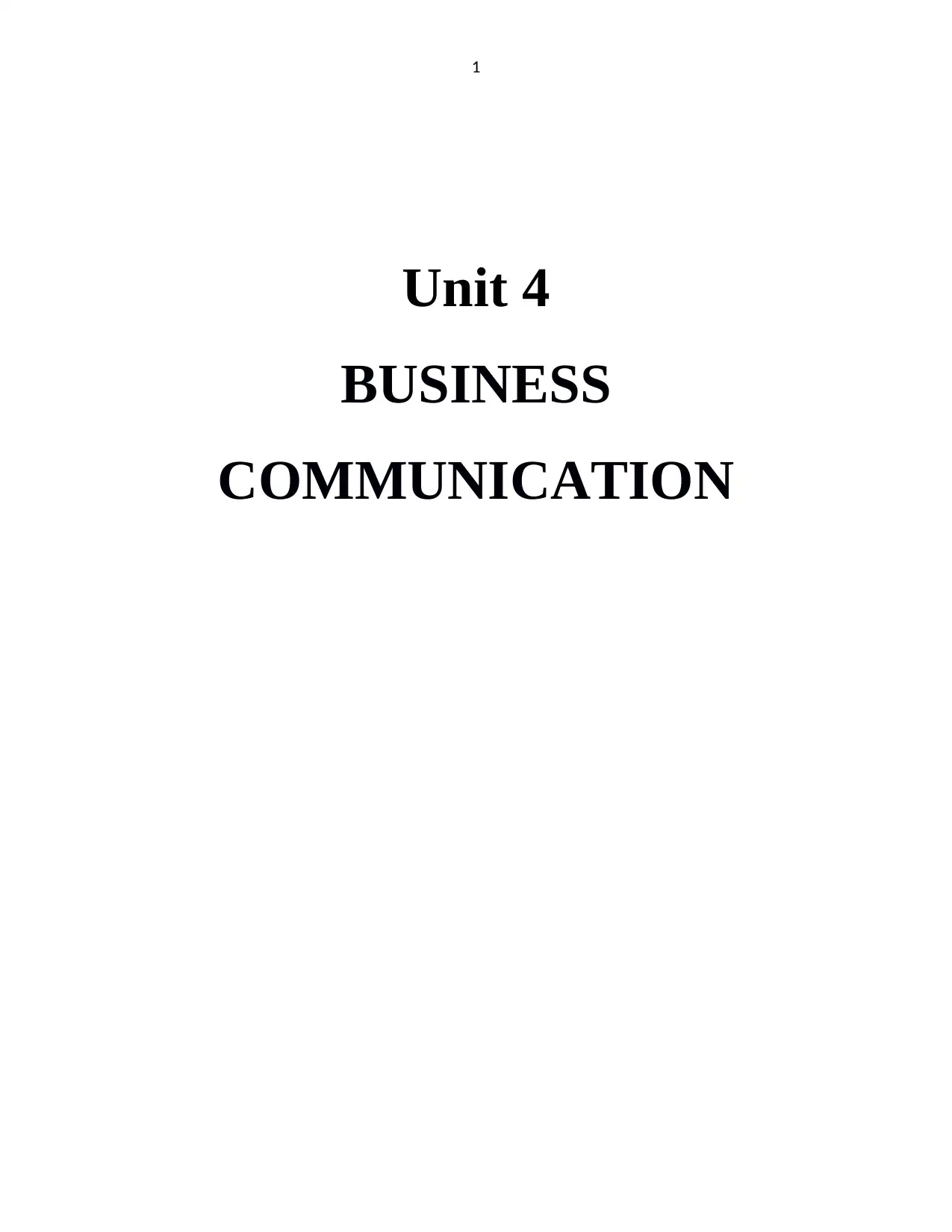
1
Unit 4
BUSINESS
COMMUNICATION
Unit 4
BUSINESS
COMMUNICATION
Paraphrase This Document
Need a fresh take? Get an instant paraphrase of this document with our AI Paraphraser
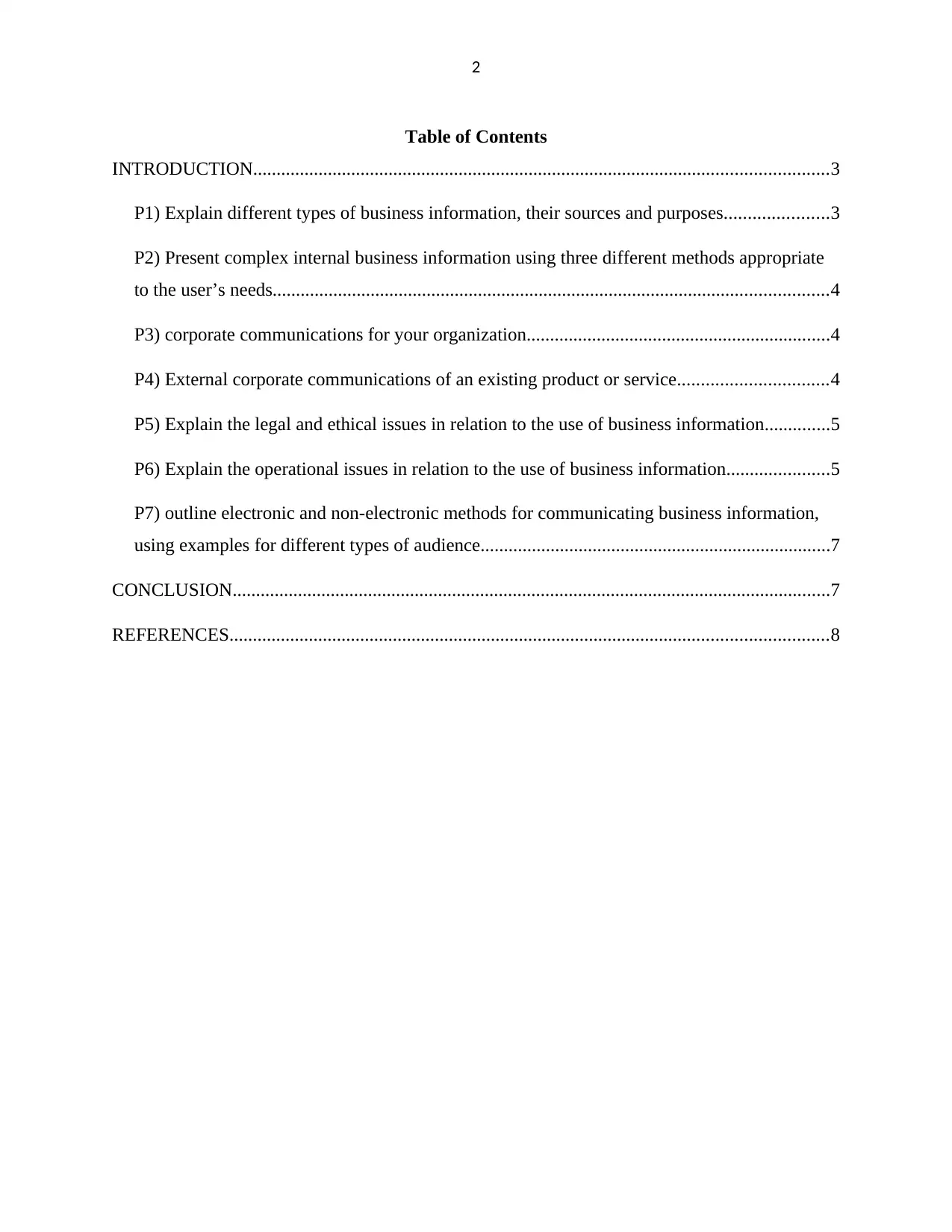
2
Table of Contents
INTRODUCTION...........................................................................................................................3
P1) Explain different types of business information, their sources and purposes......................3
P2) Present complex internal business information using three different methods appropriate
to the user’s needs.......................................................................................................................4
P3) corporate communications for your organization.................................................................4
P4) External corporate communications of an existing product or service................................4
P5) Explain the legal and ethical issues in relation to the use of business information..............5
P6) Explain the operational issues in relation to the use of business information......................5
P7) outline electronic and non-electronic methods for communicating business information,
using examples for different types of audience...........................................................................7
CONCLUSION................................................................................................................................7
REFERENCES................................................................................................................................8
Table of Contents
INTRODUCTION...........................................................................................................................3
P1) Explain different types of business information, their sources and purposes......................3
P2) Present complex internal business information using three different methods appropriate
to the user’s needs.......................................................................................................................4
P3) corporate communications for your organization.................................................................4
P4) External corporate communications of an existing product or service................................4
P5) Explain the legal and ethical issues in relation to the use of business information..............5
P6) Explain the operational issues in relation to the use of business information......................5
P7) outline electronic and non-electronic methods for communicating business information,
using examples for different types of audience...........................................................................7
CONCLUSION................................................................................................................................7
REFERENCES................................................................................................................................8
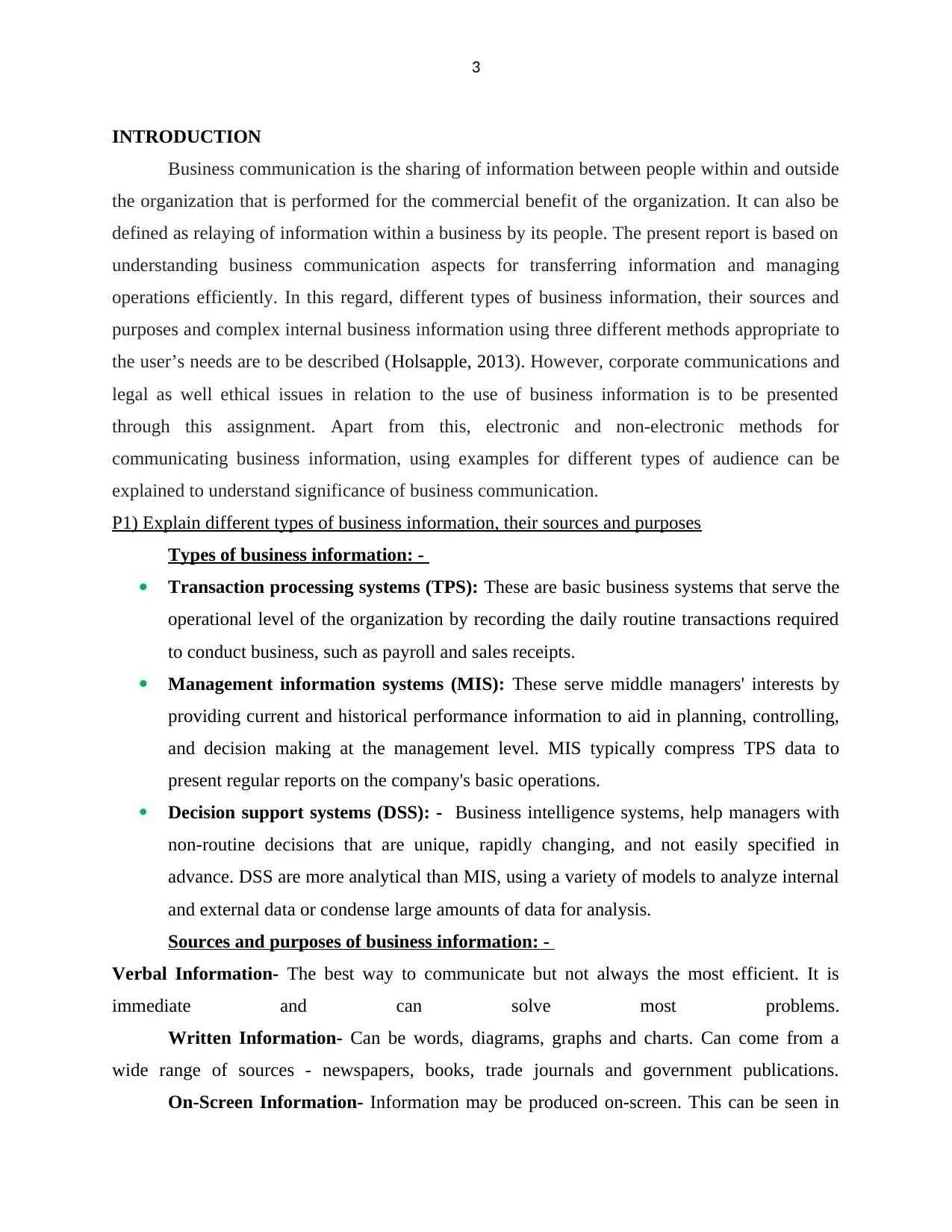
3
INTRODUCTION
Business communication is the sharing of information between people within and outside
the organization that is performed for the commercial benefit of the organization. It can also be
defined as relaying of information within a business by its people. The present report is based on
understanding business communication aspects for transferring information and managing
operations efficiently. In this regard, different types of business information, their sources and
purposes and complex internal business information using three different methods appropriate to
the user’s needs are to be described (Holsapple, 2013). However, corporate communications and
legal as well ethical issues in relation to the use of business information is to be presented
through this assignment. Apart from this, electronic and non-electronic methods for
communicating business information, using examples for different types of audience can be
explained to understand significance of business communication.
P1) Explain different types of business information, their sources and purposes
Types of business information: -
Transaction processing systems (TPS): These are basic business systems that serve the
operational level of the organization by recording the daily routine transactions required
to conduct business, such as payroll and sales receipts.
Management information systems (MIS): These serve middle managers' interests by
providing current and historical performance information to aid in planning, controlling,
and decision making at the management level. MIS typically compress TPS data to
present regular reports on the company's basic operations.
Decision support systems (DSS): - Business intelligence systems, help managers with
non-routine decisions that are unique, rapidly changing, and not easily specified in
advance. DSS are more analytical than MIS, using a variety of models to analyze internal
and external data or condense large amounts of data for analysis.
Sources and purposes of business information: -
Verbal Information- The best way to communicate but not always the most efficient. It is
immediate and can solve most problems.
Written Information- Can be words, diagrams, graphs and charts. Can come from a
wide range of sources - newspapers, books, trade journals and government publications.
On-Screen Information- Information may be produced on-screen. This can be seen in
INTRODUCTION
Business communication is the sharing of information between people within and outside
the organization that is performed for the commercial benefit of the organization. It can also be
defined as relaying of information within a business by its people. The present report is based on
understanding business communication aspects for transferring information and managing
operations efficiently. In this regard, different types of business information, their sources and
purposes and complex internal business information using three different methods appropriate to
the user’s needs are to be described (Holsapple, 2013). However, corporate communications and
legal as well ethical issues in relation to the use of business information is to be presented
through this assignment. Apart from this, electronic and non-electronic methods for
communicating business information, using examples for different types of audience can be
explained to understand significance of business communication.
P1) Explain different types of business information, their sources and purposes
Types of business information: -
Transaction processing systems (TPS): These are basic business systems that serve the
operational level of the organization by recording the daily routine transactions required
to conduct business, such as payroll and sales receipts.
Management information systems (MIS): These serve middle managers' interests by
providing current and historical performance information to aid in planning, controlling,
and decision making at the management level. MIS typically compress TPS data to
present regular reports on the company's basic operations.
Decision support systems (DSS): - Business intelligence systems, help managers with
non-routine decisions that are unique, rapidly changing, and not easily specified in
advance. DSS are more analytical than MIS, using a variety of models to analyze internal
and external data or condense large amounts of data for analysis.
Sources and purposes of business information: -
Verbal Information- The best way to communicate but not always the most efficient. It is
immediate and can solve most problems.
Written Information- Can be words, diagrams, graphs and charts. Can come from a
wide range of sources - newspapers, books, trade journals and government publications.
On-Screen Information- Information may be produced on-screen. This can be seen in
⊘ This is a preview!⊘
Do you want full access?
Subscribe today to unlock all pages.

Trusted by 1+ million students worldwide
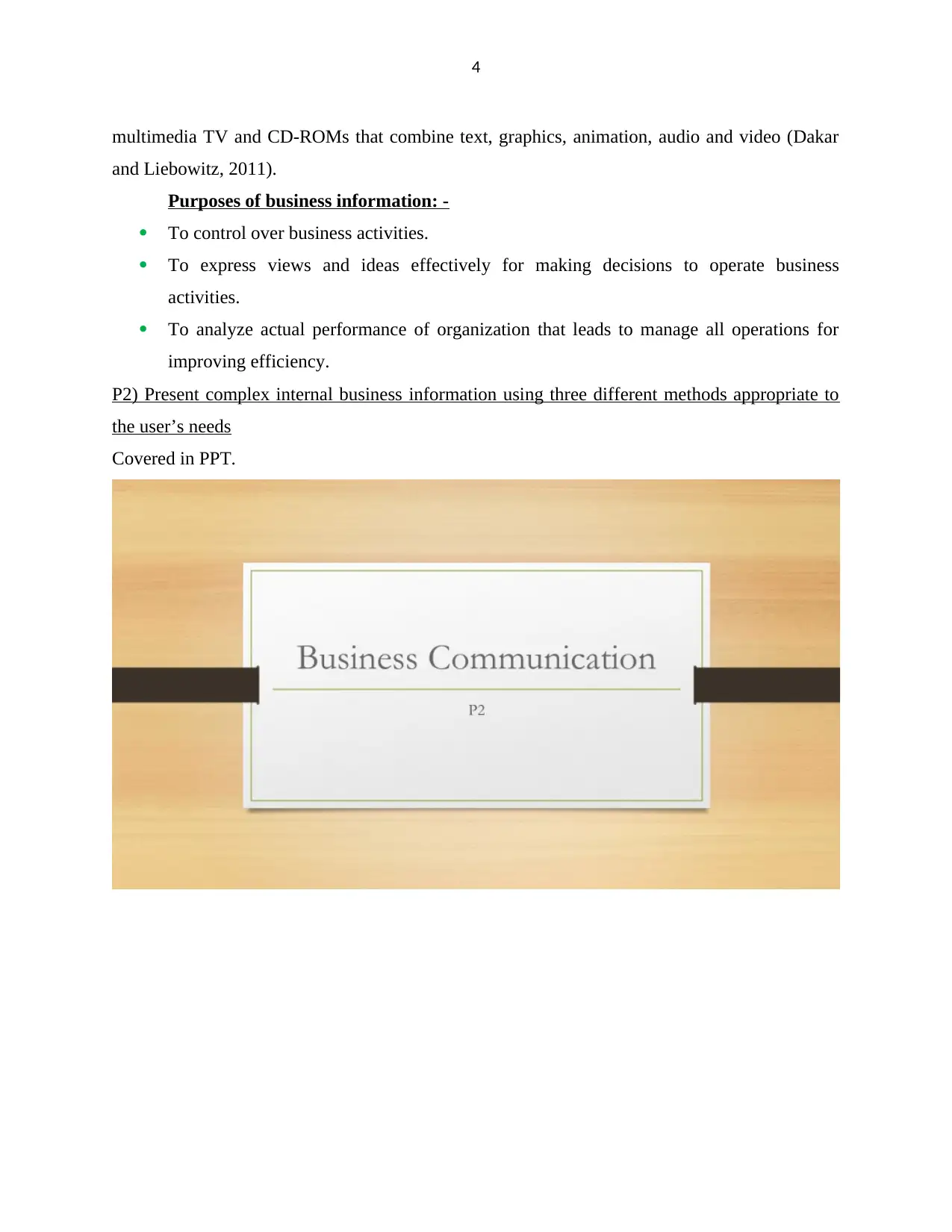
4
multimedia TV and CD-ROMs that combine text, graphics, animation, audio and video (Dakar
and Liebowitz, 2011).
Purposes of business information: -
To control over business activities.
To express views and ideas effectively for making decisions to operate business
activities.
To analyze actual performance of organization that leads to manage all operations for
improving efficiency.
P2) Present complex internal business information using three different methods appropriate to
the user’s needs
Covered in PPT.
multimedia TV and CD-ROMs that combine text, graphics, animation, audio and video (Dakar
and Liebowitz, 2011).
Purposes of business information: -
To control over business activities.
To express views and ideas effectively for making decisions to operate business
activities.
To analyze actual performance of organization that leads to manage all operations for
improving efficiency.
P2) Present complex internal business information using three different methods appropriate to
the user’s needs
Covered in PPT.
Paraphrase This Document
Need a fresh take? Get an instant paraphrase of this document with our AI Paraphraser
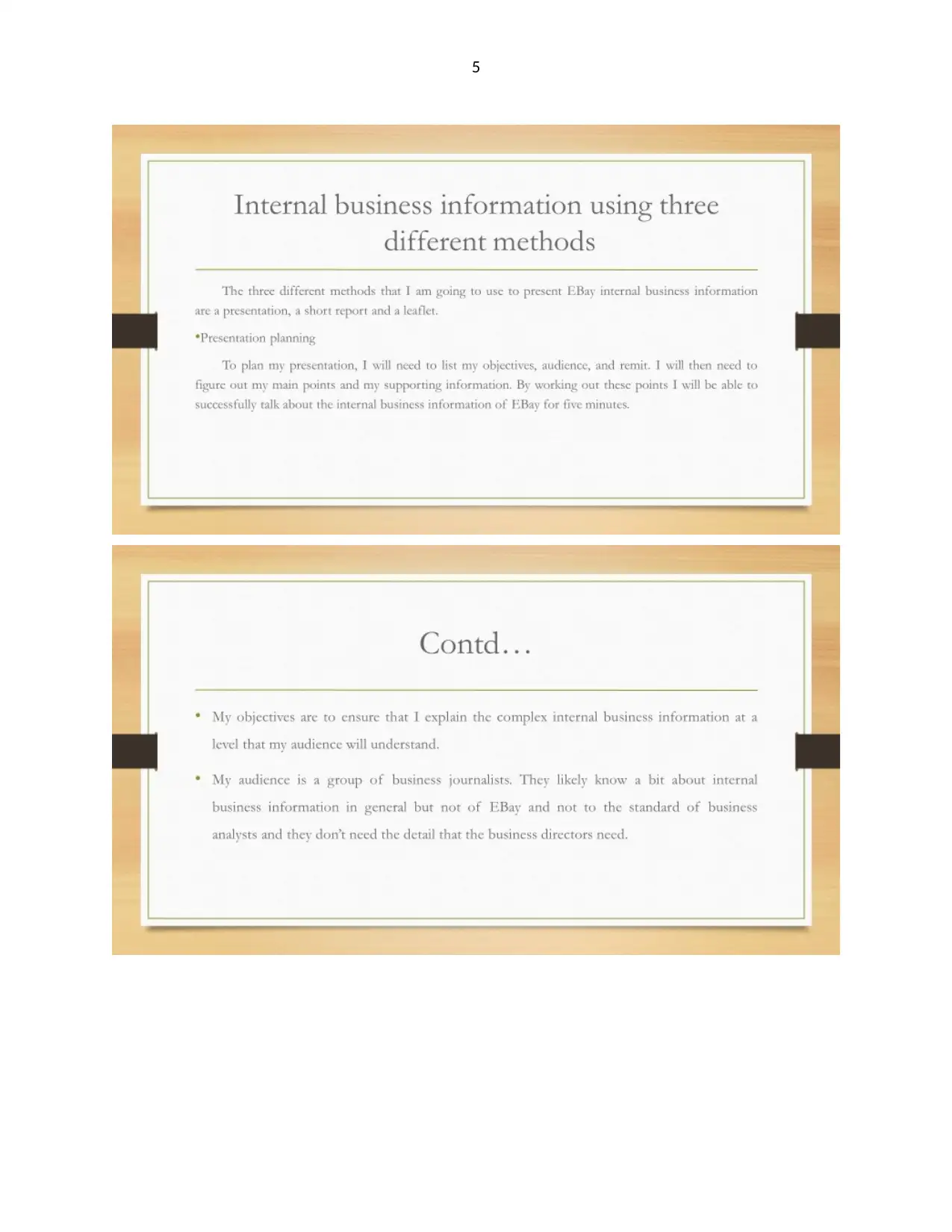
5
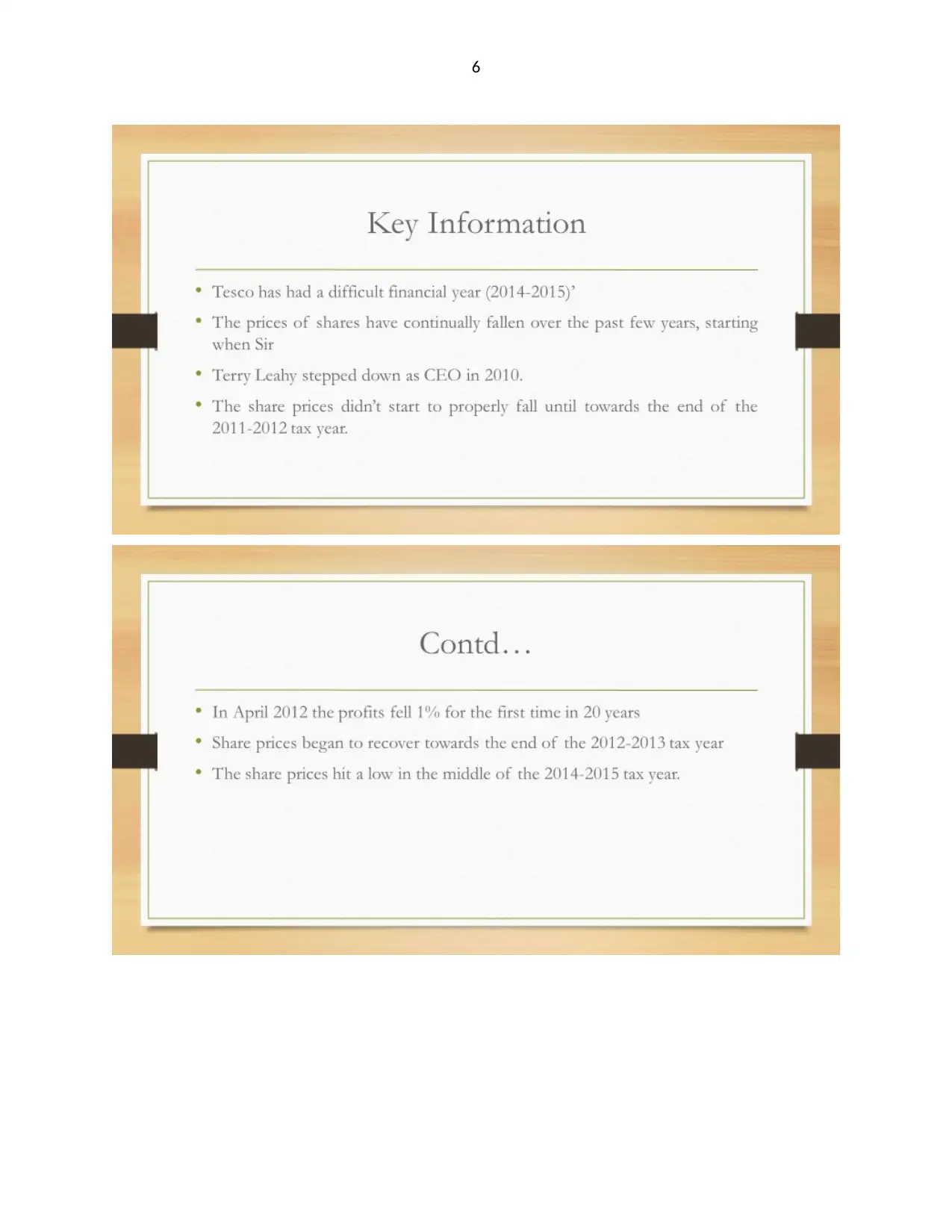
6
⊘ This is a preview!⊘
Do you want full access?
Subscribe today to unlock all pages.

Trusted by 1+ million students worldwide
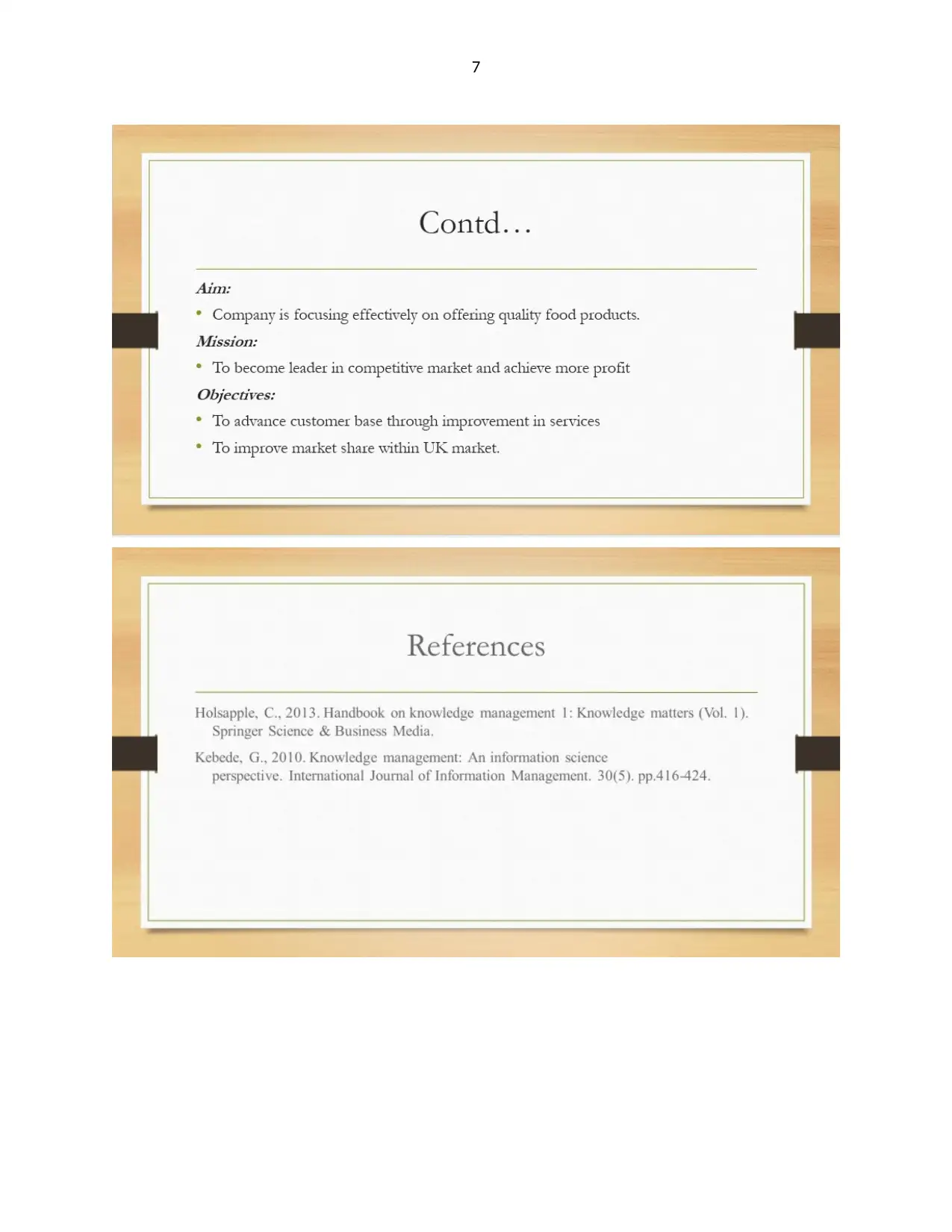
7
Paraphrase This Document
Need a fresh take? Get an instant paraphrase of this document with our AI Paraphraser
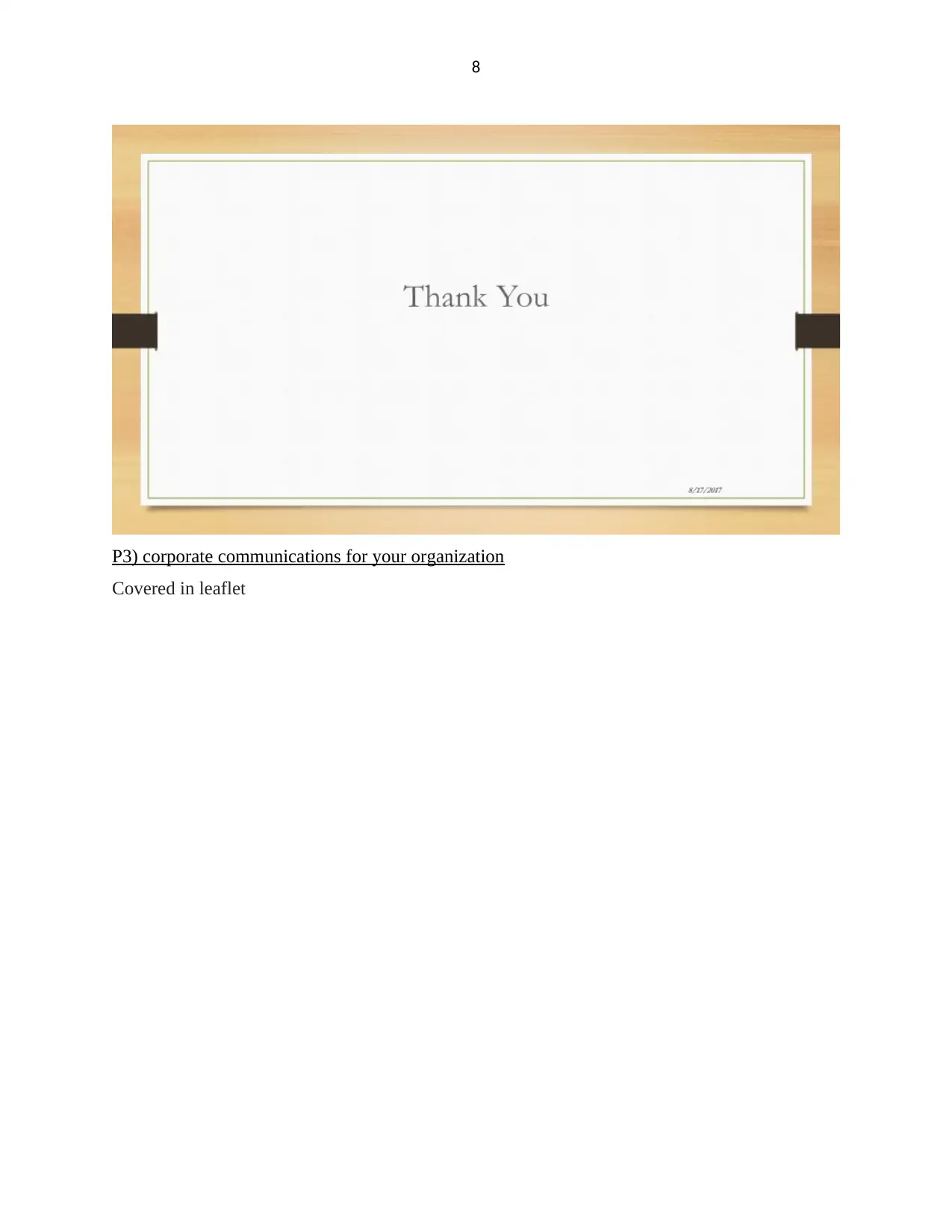
8
P3) corporate communications for your organization
Covered in leaflet
P3) corporate communications for your organization
Covered in leaflet
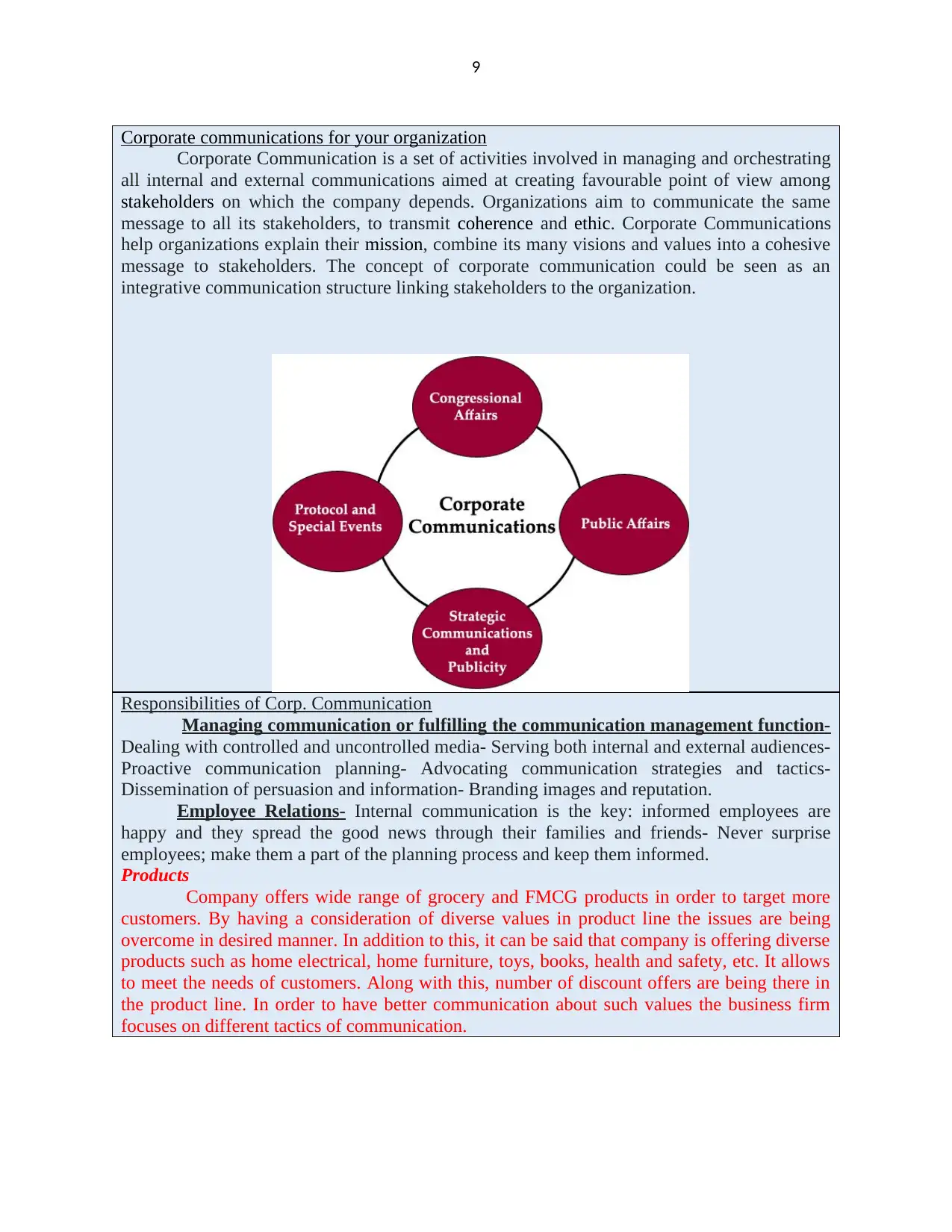
9
Corporate communications for your organization
Corporate Communication is a set of activities involved in managing and orchestrating
all internal and external communications aimed at creating favourable point of view among
stakeholders on which the company depends. Organizations aim to communicate the same
message to all its stakeholders, to transmit coherence and ethic. Corporate Communications
help organizations explain their mission, combine its many visions and values into a cohesive
message to stakeholders. The concept of corporate communication could be seen as an
integrative communication structure linking stakeholders to the organization.
Responsibilities of Corp. Communication
Managing communication or fulfilling the communication management function-
Dealing with controlled and uncontrolled media- Serving both internal and external audiences-
Proactive communication planning- Advocating communication strategies and tactics-
Dissemination of persuasion and information- Branding images and reputation.
Employee Relations- Internal communication is the key: informed employees are
happy and they spread the good news through their families and friends- Never surprise
employees; make them a part of the planning process and keep them informed.
Products
Company offers wide range of grocery and FMCG products in order to target more
customers. By having a consideration of diverse values in product line the issues are being
overcome in desired manner. In addition to this, it can be said that company is offering diverse
products such as home electrical, home furniture, toys, books, health and safety, etc. It allows
to meet the needs of customers. Along with this, number of discount offers are being there in
the product line. In order to have better communication about such values the business firm
focuses on different tactics of communication.
Corporate communications for your organization
Corporate Communication is a set of activities involved in managing and orchestrating
all internal and external communications aimed at creating favourable point of view among
stakeholders on which the company depends. Organizations aim to communicate the same
message to all its stakeholders, to transmit coherence and ethic. Corporate Communications
help organizations explain their mission, combine its many visions and values into a cohesive
message to stakeholders. The concept of corporate communication could be seen as an
integrative communication structure linking stakeholders to the organization.
Responsibilities of Corp. Communication
Managing communication or fulfilling the communication management function-
Dealing with controlled and uncontrolled media- Serving both internal and external audiences-
Proactive communication planning- Advocating communication strategies and tactics-
Dissemination of persuasion and information- Branding images and reputation.
Employee Relations- Internal communication is the key: informed employees are
happy and they spread the good news through their families and friends- Never surprise
employees; make them a part of the planning process and keep them informed.
Products
Company offers wide range of grocery and FMCG products in order to target more
customers. By having a consideration of diverse values in product line the issues are being
overcome in desired manner. In addition to this, it can be said that company is offering diverse
products such as home electrical, home furniture, toys, books, health and safety, etc. It allows
to meet the needs of customers. Along with this, number of discount offers are being there in
the product line. In order to have better communication about such values the business firm
focuses on different tactics of communication.
⊘ This is a preview!⊘
Do you want full access?
Subscribe today to unlock all pages.

Trusted by 1+ million students worldwide
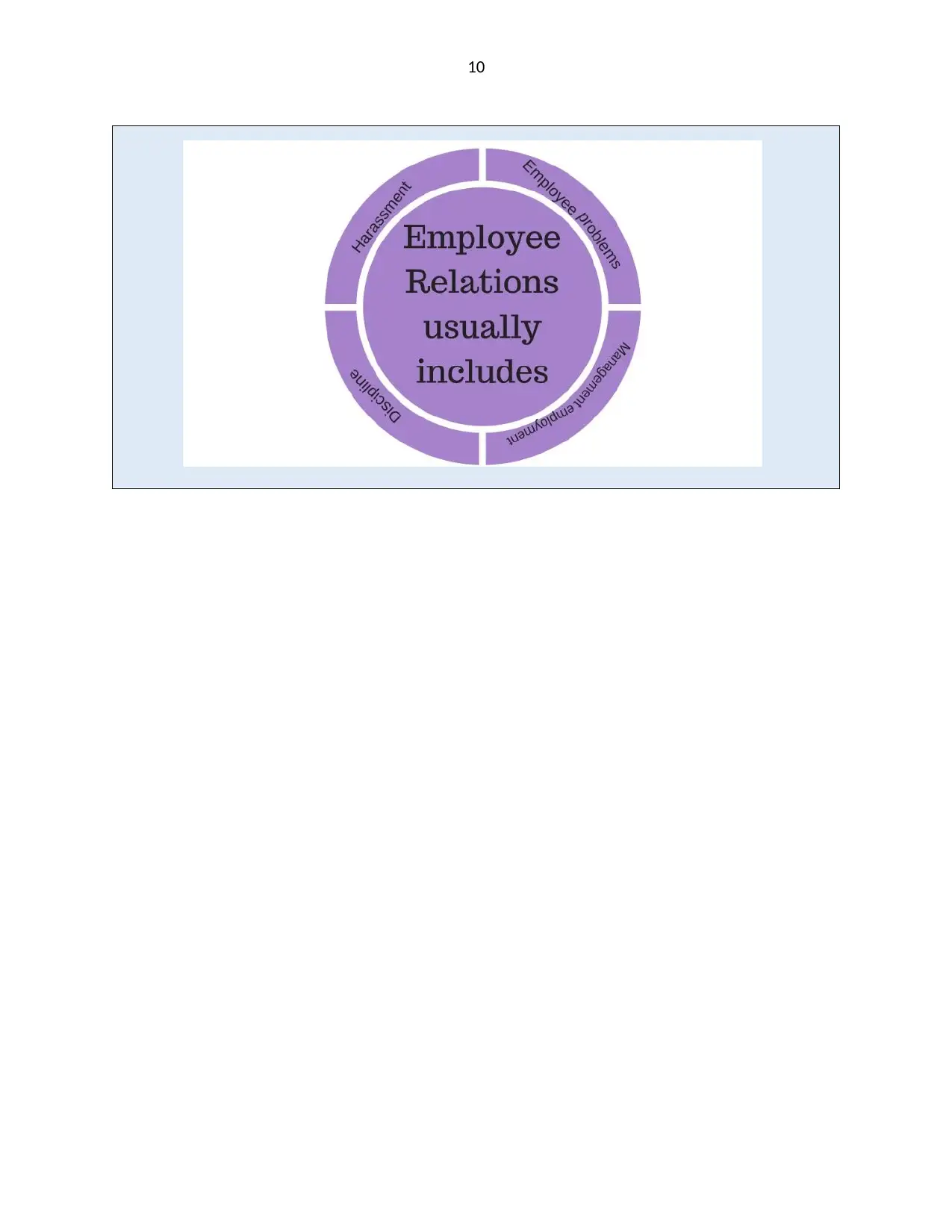
10
Paraphrase This Document
Need a fresh take? Get an instant paraphrase of this document with our AI Paraphraser
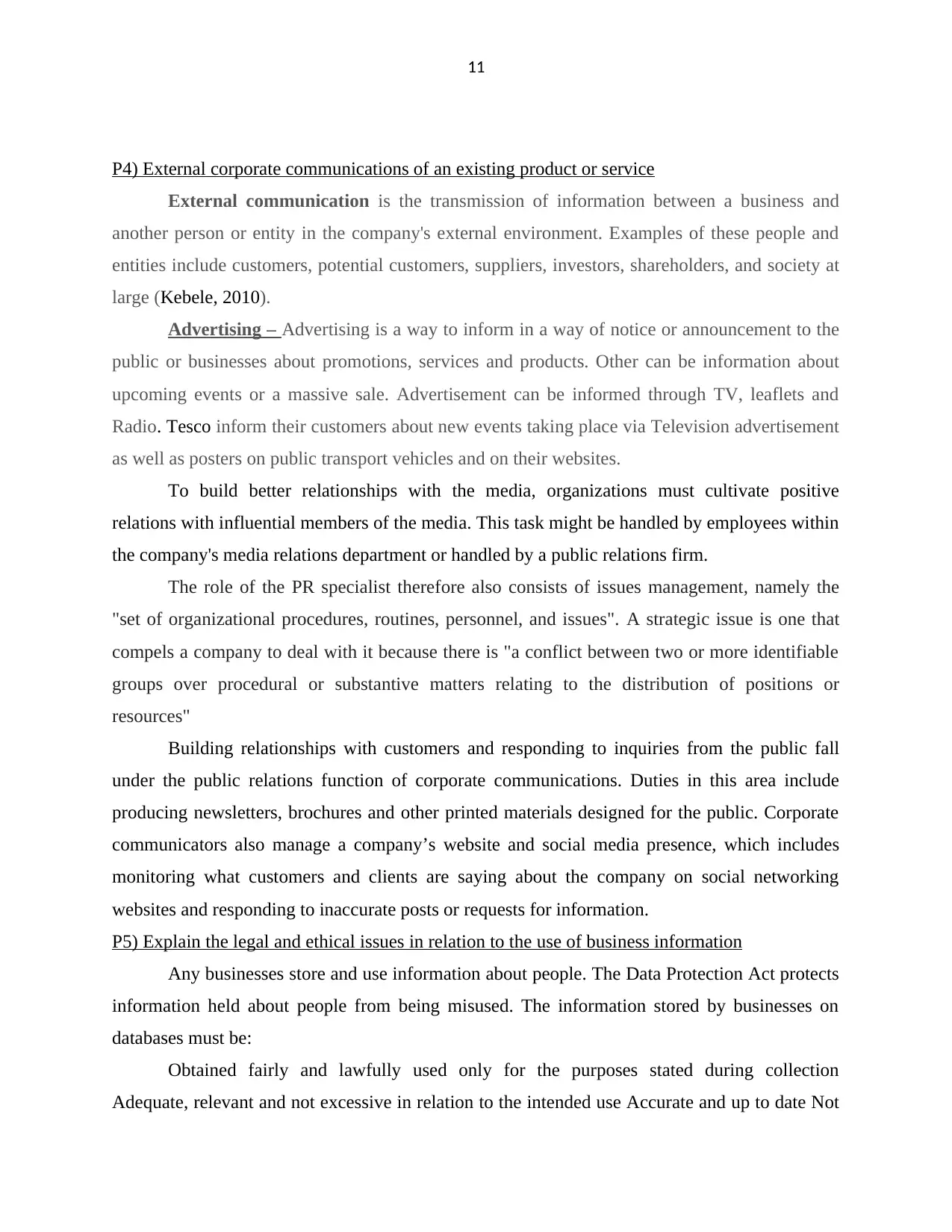
11
P4) External corporate communications of an existing product or service
External communication is the transmission of information between a business and
another person or entity in the company's external environment. Examples of these people and
entities include customers, potential customers, suppliers, investors, shareholders, and society at
large (Kebele, 2010).
Advertising – Advertising is a way to inform in a way of notice or announcement to the
public or businesses about promotions, services and products. Other can be information about
upcoming events or a massive sale. Advertisement can be informed through TV, leaflets and
Radio. Tesco inform their customers about new events taking place via Television advertisement
as well as posters on public transport vehicles and on their websites.
To build better relationships with the media, organizations must cultivate positive
relations with influential members of the media. This task might be handled by employees within
the company's media relations department or handled by a public relations firm.
The role of the PR specialist therefore also consists of issues management, namely the
"set of organizational procedures, routines, personnel, and issues". A strategic issue is one that
compels a company to deal with it because there is "a conflict between two or more identifiable
groups over procedural or substantive matters relating to the distribution of positions or
resources"
Building relationships with customers and responding to inquiries from the public fall
under the public relations function of corporate communications. Duties in this area include
producing newsletters, brochures and other printed materials designed for the public. Corporate
communicators also manage a company’s website and social media presence, which includes
monitoring what customers and clients are saying about the company on social networking
websites and responding to inaccurate posts or requests for information.
P5) Explain the legal and ethical issues in relation to the use of business information
Any businesses store and use information about people. The Data Protection Act protects
information held about people from being misused. The information stored by businesses on
databases must be:
Obtained fairly and lawfully used only for the purposes stated during collection
Adequate, relevant and not excessive in relation to the intended use Accurate and up to date Not
P4) External corporate communications of an existing product or service
External communication is the transmission of information between a business and
another person or entity in the company's external environment. Examples of these people and
entities include customers, potential customers, suppliers, investors, shareholders, and society at
large (Kebele, 2010).
Advertising – Advertising is a way to inform in a way of notice or announcement to the
public or businesses about promotions, services and products. Other can be information about
upcoming events or a massive sale. Advertisement can be informed through TV, leaflets and
Radio. Tesco inform their customers about new events taking place via Television advertisement
as well as posters on public transport vehicles and on their websites.
To build better relationships with the media, organizations must cultivate positive
relations with influential members of the media. This task might be handled by employees within
the company's media relations department or handled by a public relations firm.
The role of the PR specialist therefore also consists of issues management, namely the
"set of organizational procedures, routines, personnel, and issues". A strategic issue is one that
compels a company to deal with it because there is "a conflict between two or more identifiable
groups over procedural or substantive matters relating to the distribution of positions or
resources"
Building relationships with customers and responding to inquiries from the public fall
under the public relations function of corporate communications. Duties in this area include
producing newsletters, brochures and other printed materials designed for the public. Corporate
communicators also manage a company’s website and social media presence, which includes
monitoring what customers and clients are saying about the company on social networking
websites and responding to inaccurate posts or requests for information.
P5) Explain the legal and ethical issues in relation to the use of business information
Any businesses store and use information about people. The Data Protection Act protects
information held about people from being misused. The information stored by businesses on
databases must be:
Obtained fairly and lawfully used only for the purposes stated during collection
Adequate, relevant and not excessive in relation to the intended use Accurate and up to date Not
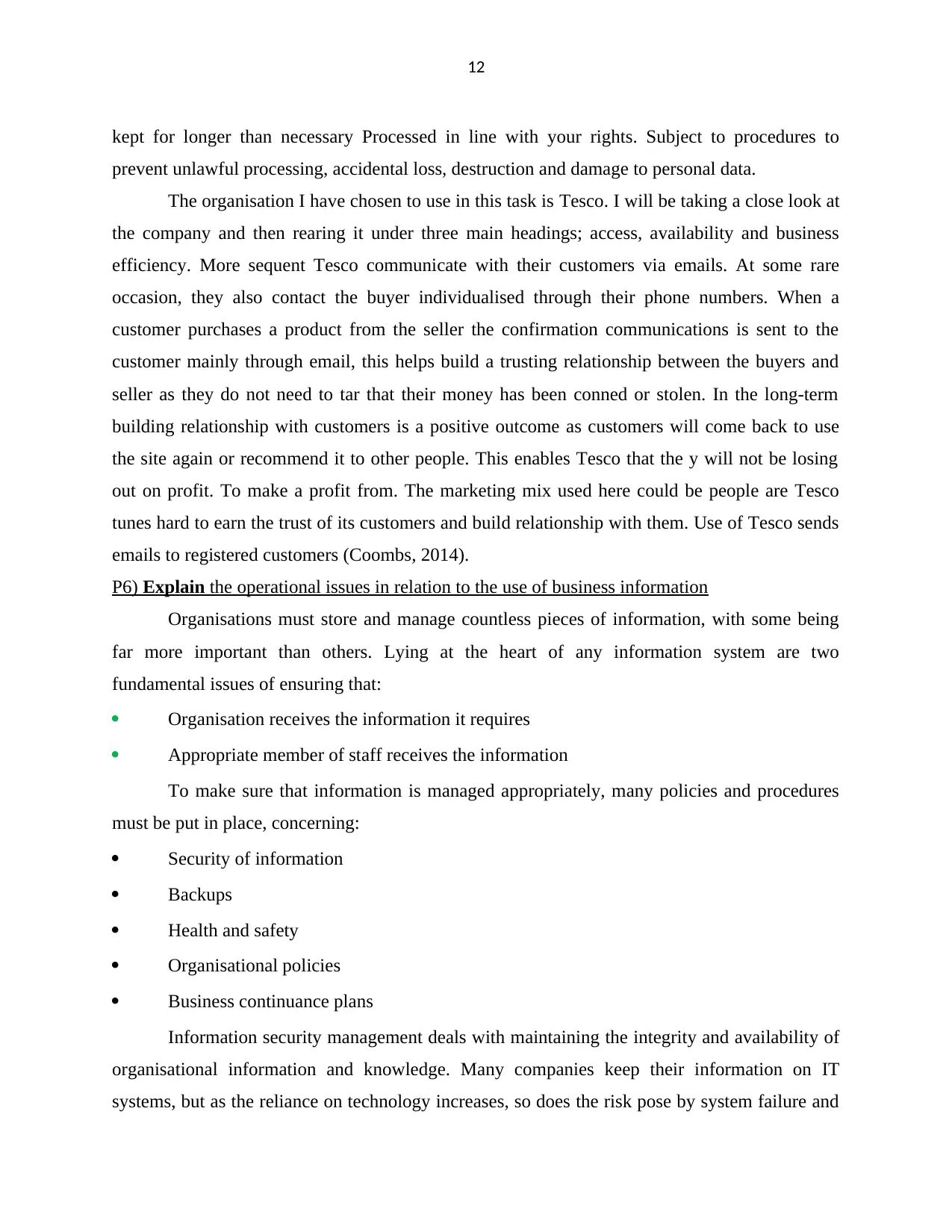
12
kept for longer than necessary Processed in line with your rights. Subject to procedures to
prevent unlawful processing, accidental loss, destruction and damage to personal data.
The organisation I have chosen to use in this task is Tesco. I will be taking a close look at
the company and then rearing it under three main headings; access, availability and business
efficiency. More sequent Tesco communicate with their customers via emails. At some rare
occasion, they also contact the buyer individualised through their phone numbers. When a
customer purchases a product from the seller the confirmation communications is sent to the
customer mainly through email, this helps build a trusting relationship between the buyers and
seller as they do not need to tar that their money has been conned or stolen. In the long-term
building relationship with customers is a positive outcome as customers will come back to use
the site again or recommend it to other people. This enables Tesco that the y will not be losing
out on profit. To make a profit from. The marketing mix used here could be people are Tesco
tunes hard to earn the trust of its customers and build relationship with them. Use of Tesco sends
emails to registered customers (Coombs, 2014).
P6) Explain the operational issues in relation to the use of business information
Organisations must store and manage countless pieces of information, with some being
far more important than others. Lying at the heart of any information system are two
fundamental issues of ensuring that:
Organisation receives the information it requires
Appropriate member of staff receives the information
To make sure that information is managed appropriately, many policies and procedures
must be put in place, concerning:
Security of information
Backups
Health and safety
Organisational policies
Business continuance plans
Information security management deals with maintaining the integrity and availability of
organisational information and knowledge. Many companies keep their information on IT
systems, but as the reliance on technology increases, so does the risk pose by system failure and
kept for longer than necessary Processed in line with your rights. Subject to procedures to
prevent unlawful processing, accidental loss, destruction and damage to personal data.
The organisation I have chosen to use in this task is Tesco. I will be taking a close look at
the company and then rearing it under three main headings; access, availability and business
efficiency. More sequent Tesco communicate with their customers via emails. At some rare
occasion, they also contact the buyer individualised through their phone numbers. When a
customer purchases a product from the seller the confirmation communications is sent to the
customer mainly through email, this helps build a trusting relationship between the buyers and
seller as they do not need to tar that their money has been conned or stolen. In the long-term
building relationship with customers is a positive outcome as customers will come back to use
the site again or recommend it to other people. This enables Tesco that the y will not be losing
out on profit. To make a profit from. The marketing mix used here could be people are Tesco
tunes hard to earn the trust of its customers and build relationship with them. Use of Tesco sends
emails to registered customers (Coombs, 2014).
P6) Explain the operational issues in relation to the use of business information
Organisations must store and manage countless pieces of information, with some being
far more important than others. Lying at the heart of any information system are two
fundamental issues of ensuring that:
Organisation receives the information it requires
Appropriate member of staff receives the information
To make sure that information is managed appropriately, many policies and procedures
must be put in place, concerning:
Security of information
Backups
Health and safety
Organisational policies
Business continuance plans
Information security management deals with maintaining the integrity and availability of
organisational information and knowledge. Many companies keep their information on IT
systems, but as the reliance on technology increases, so does the risk pose by system failure and
⊘ This is a preview!⊘
Do you want full access?
Subscribe today to unlock all pages.

Trusted by 1+ million students worldwide
1 out of 15
Related Documents
Your All-in-One AI-Powered Toolkit for Academic Success.
+13062052269
info@desklib.com
Available 24*7 on WhatsApp / Email
![[object Object]](/_next/static/media/star-bottom.7253800d.svg)
Unlock your academic potential
Copyright © 2020–2025 A2Z Services. All Rights Reserved. Developed and managed by ZUCOL.





